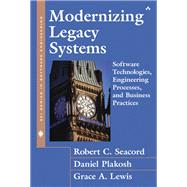
Robert Seacord began programming (professionally) for IBM in 1982 and has been programming in C since 1985, and in C++ since 1992. Robert is currently a Senior Vulnerability Analyst with the CERT/Coordination Center at the Software Engineering Institute (SEI). He is coauthor of Building Systems from Commercial Components (Addison-Wesley, 2002) and Modernizing Legacy Systems (Addison-Wesley, 2003). The CERT/CC, among other security-related activities, regularly analyzes software vulnerability reports and assesses the risk to the Internet and other critical infrastructure.
Daniel Plakosh is a senior member of the technical staff in the COTS-Based Systems initiative at the SEI. Prior to joining the SEI, he was the lead software engineer for the Systems Engineering Department at the Naval Surface Warfare Center (NSWCDD).
Grace A. Lewis is a member of the technical staff at the SEI. Before joining the SEI, she was Chief of Systems Development for Icesi University in Cali, Colombia.
The New copy of this book will include any supplemental materials advertised. Please check the title of the book to determine if it should include any access cards, study guides, lab manuals, CDs, etc.
The Used, Rental and eBook copies of this book are not guaranteed to include any supplemental materials. Typically, only the book itself is included. This is true even if the title states it includes any access cards, study guides, lab manuals, CDs, etc.